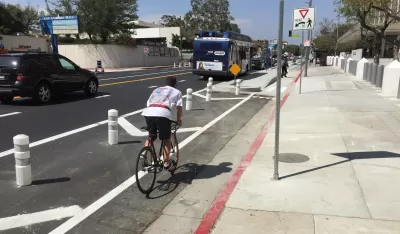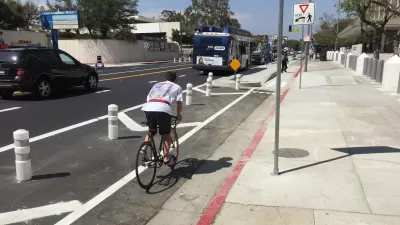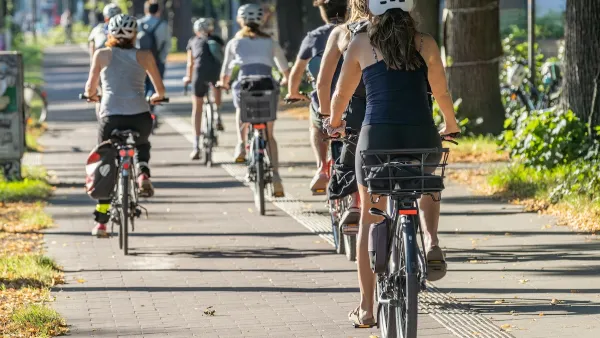A longitudinal study shows that bike facilities don't precede neighborhood change or displacement of residents.

According to research analyzing data from 29 American cities from the University of New Mexico and the University of Colorado, "[t]he installation of new bike infrastructure in neighborhoods does not lead to displacement of people of color, and low-income areas received more 'hard' facilities like buffered or protected bike lanes than high income areas."
Lisa Caballero writes for Bike Portland that "this study was unique in that it distinguished between types of facilities, from sharrows to protected lanes. It found differences in who got what, with lower income areas more likely to receive protected bike lanes." The authors' "interpretation of the results was that increases in the percentage of white people in a neighborhood preceeded an increase in bike facilities more so than the reverse, bike facilities preceeding a change in demographics."
According to Kea Wilson of Streetsblog:
[S]tudy co-author Nick Ferenchak was careful to note that the finding did not mean that U.S. transportation planners are necessarily doing a great job at using cycling as a tool for broader mobility justice. In particular, the data revealed that transportation leaders aren’t delivering equal access to new bicycle infrastructure for people of color — and in the context of a quantitative analysis, they couldn’t determine whether transportation leaders were delivering equitable access to the transportation infrastructure for which those communities are actually asking, if leaders are even asking at all.
"Low-income people, meanwhile, are getting better access to meaningful bicycle infrastructure than some may expect — though maybe not as fast as those communities actually need," considering that "39 percent of bike commuting is done by the lowest-income quartile in the U.S." Ferenchak concludes that, while "gentrification is a complex set of forces that goes beyond displacement," we now know "we can go ahead and build the bike lanes. We know we’re not going to be displacing people just by doing that."
FULL STORY: Study suggests bike lanes do not lead to displacement, gentrification

Maui's Vacation Rental Debate Turns Ugly
Verbal attacks, misinformation campaigns and fistfights plague a high-stakes debate to convert thousands of vacation rentals into long-term housing.

Planetizen Federal Action Tracker
A weekly monitor of how Trump’s orders and actions are impacting planners and planning in America.

San Francisco Suspends Traffic Calming Amidst Record Deaths
Citing “a challenging fiscal landscape,” the city will cease the program on the heels of 42 traffic deaths, including 24 pedestrians.

Defunct Pittsburgh Power Plant to Become Residential Tower
A decommissioned steam heat plant will be redeveloped into almost 100 affordable housing units.

Trump Prompts Restructuring of Transportation Research Board in “Unprecedented Overreach”
The TRB has eliminated more than half of its committees including those focused on climate, equity, and cities.

Amtrak Rolls Out New Orleans to Alabama “Mardi Gras” Train
The new service will operate morning and evening departures between Mobile and New Orleans.
Urban Design for Planners 1: Software Tools
This six-course series explores essential urban design concepts using open source software and equips planners with the tools they need to participate fully in the urban design process.
Planning for Universal Design
Learn the tools for implementing Universal Design in planning regulations.
Heyer Gruel & Associates PA
JM Goldson LLC
Custer County Colorado
City of Camden Redevelopment Agency
City of Astoria
Transportation Research & Education Center (TREC) at Portland State University
Jefferson Parish Government
Camden Redevelopment Agency
City of Claremont





























